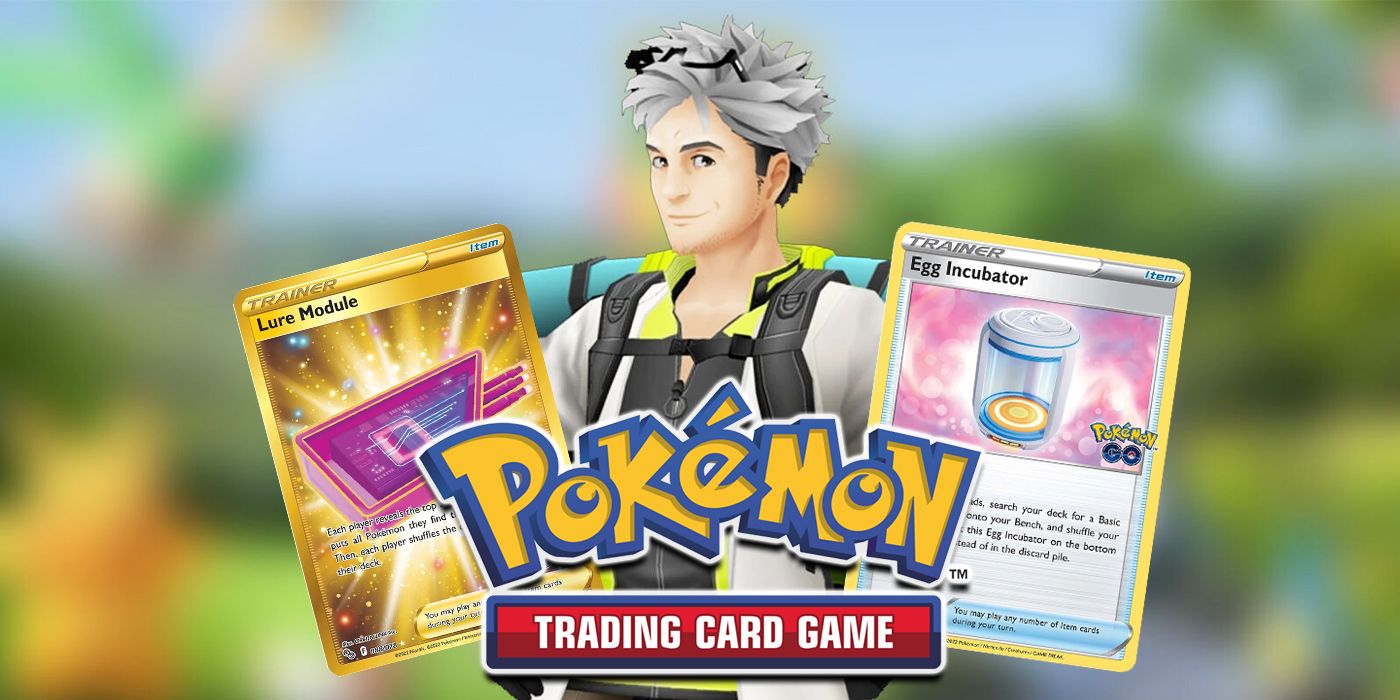
When the Pokémon Trading Card Game's collaboration with Pokémon GO launches in Summer 2022, players will be able to collect a handful of new TCG cards that are based on actual items and mechanics from the Niantic game. The special crossover set was first teased in 2021 with the Pokémon GO Professor Willow TCG card, which was given out as a promotional item on the official Pokémon Center store. After months of anticipation, the Pokémon GO TCG set is finally debuting in July and will include many additional cards that are callbacks to the popular mobile title.
Pokémon GO was originally launched in 2016 and quickly became a worldwide phenomenon. Niantic's unique take on the Game Freak franchise, was a major hit with Pokémon fans as it allowed them to travel outside their homes to catch Pokémon in the real world. Pokémon GO celebrated its fifth anniversary by collaborating with The Pokémon Company to make a special crossover TCG expansion. The new set includes many popular characters from the mobile game, such as the beloved Pokémon GO Team Leaders Candela, Blanche, and Spark.
The Pokémon GO TCG set officially releases on Friday, July 1st, and will feature many other additional items and mechanics that are from the Niantic game. While they are largely based on classic features from the Pokémon series, many of them have a unique spin on how they are used in the popular mobile game. Below is a list of what the new Pokémon GO TCG cards actually do in Pokémon GO.
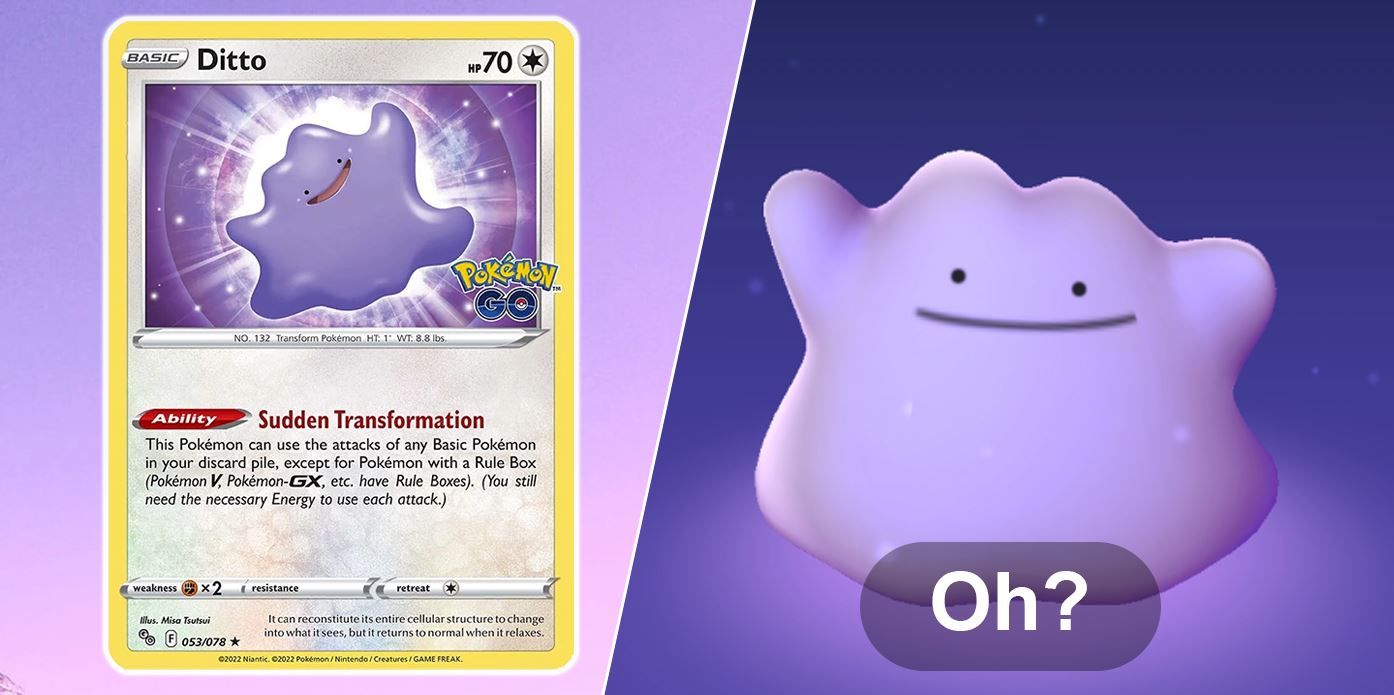
One of the most exciting features of the Pokémon GO TCG set is the brand new peelable Ditto cards. Select Pokémon cards will feature fake sticker artwork, that players will be able to peel off to reveal a holographic Ditto card that is hiding underneath. The peelable Pokémon GO TCG Ditto cards are based on one of the mobile game's most popular mechanics. In Pokémon GO, Ditto disguises itself as other Pokémon that spawn across the map, and trainers have to find it by catching random Pokémon.
Every few months, Niantic updates the pool of Pokémon that the Kanto shapeshifter can hide as. Although Ditto has always had the ability to clone other Pokémon and people since Pokémon Red and Blue, Niantic's implementation of the mechanic has always been one of Pokémon GO's best features. So it's interesting to see how the TCG crossover figured out a way to re-create the experience by having players find Ditto's disguises in the Pokémon card set.
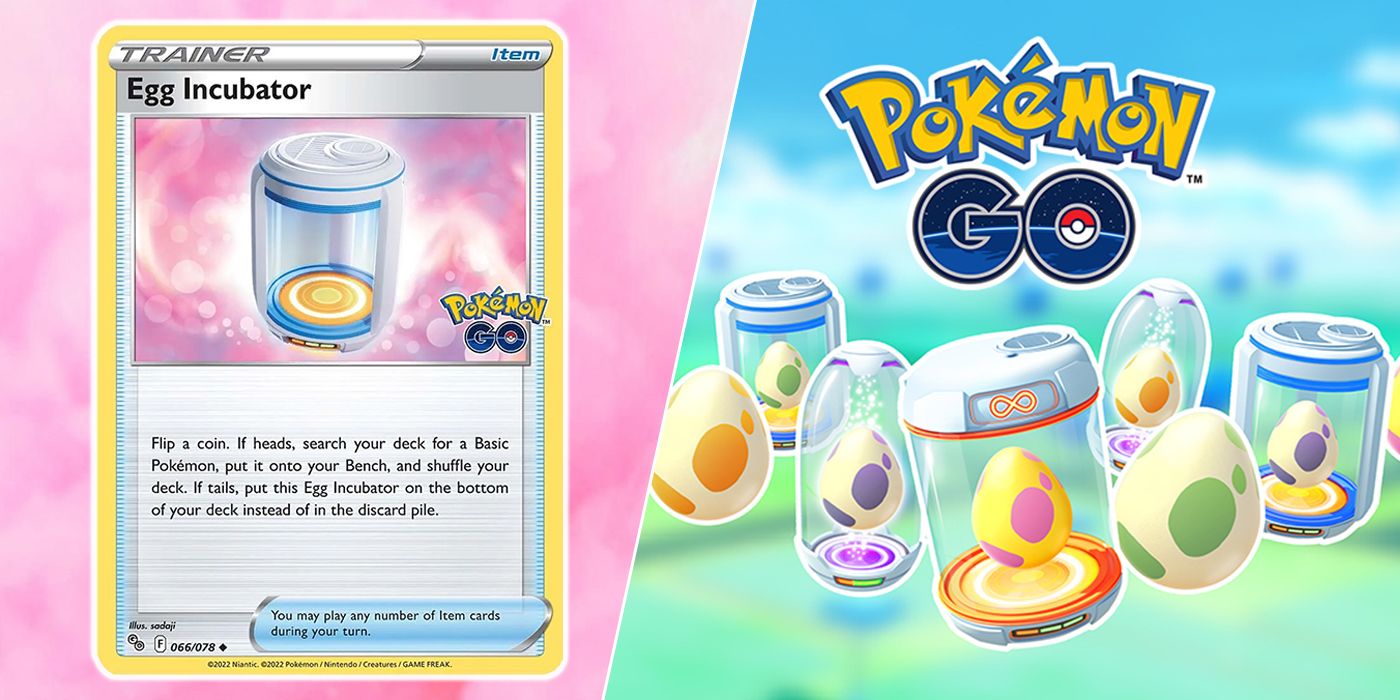
In Pokémon Gold and Silver, Game Freak debuted the breeding mechanic. The first Pokémon Egg ever obtainable in the series eventually hatches into a Togepi during the main Johto story campaign. Niantic gave a spin on the Gen 2 mechanic by introducing the new Pokémon GO Egg Incubator items. In order for Pokémon GO players to hatch their eggs, they need to walk a certain distance in the real world.
To cut down on the walking distance, Pokémon GO players can put their eggs in an Incubator item to make their Pokémon hatch earlier. The signature mechanic makes an appearance in the Pokémon GO TCG set as a Trainer Item card. Players who use the card will get to add a basic Pokémon from their deck to their bench if they get heads on a coin flip. If the coin flip lands on Tails, then the Egg Incubator is placed at the bottom of the trainer's deck.
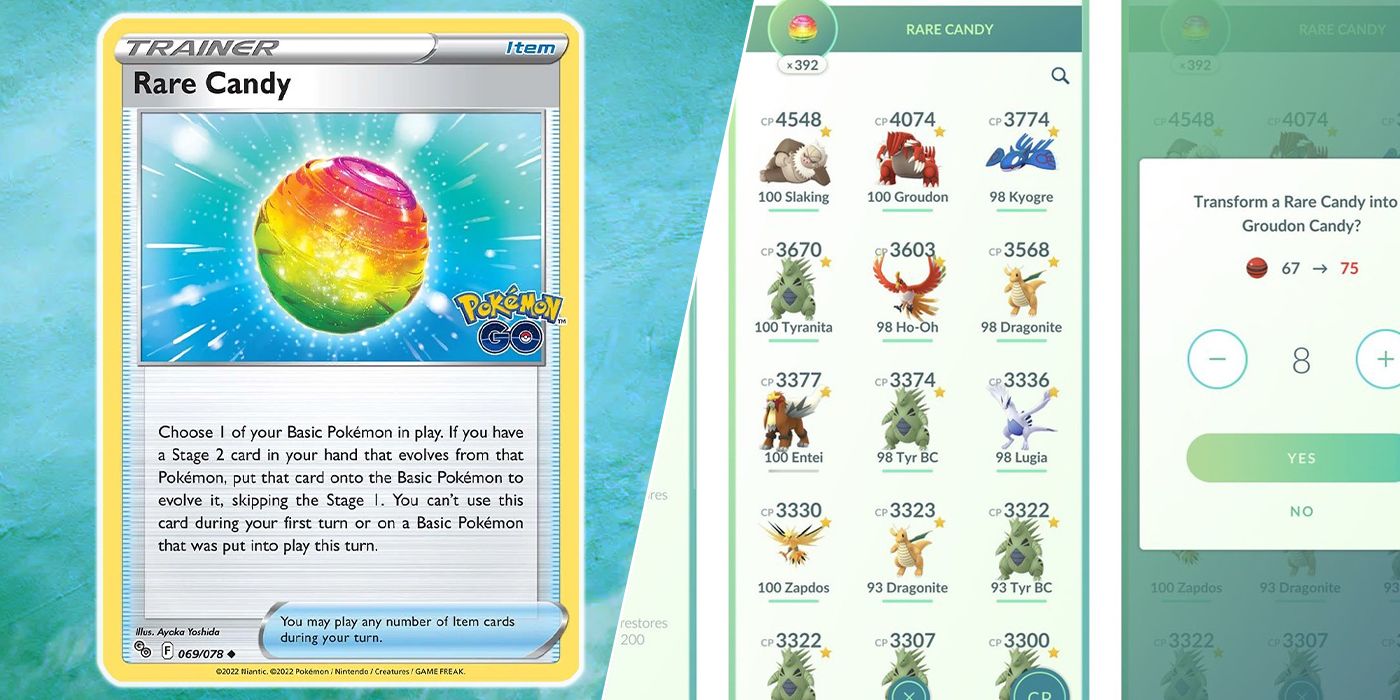
The Rare Candy item first made its debut in Pokémon Red and Blue in 1998 and allowed players to automatically level up their Pokémon after using the consumable. Pokémon GO's Rare Candy mechanic works a little differently, as the item is instead converted into a Pokémon Candy after being used.
In the mobile game, trainers can power up or evolve their Pokémon by collecting enough Candy specific to that Pokémon. The Niantic version of Rare Candy is another Trainer Item card in the Pokémon GO TCG set, and it allows players to automatically evolve a basic Pokémon that is in play to its second-stage evolution card.
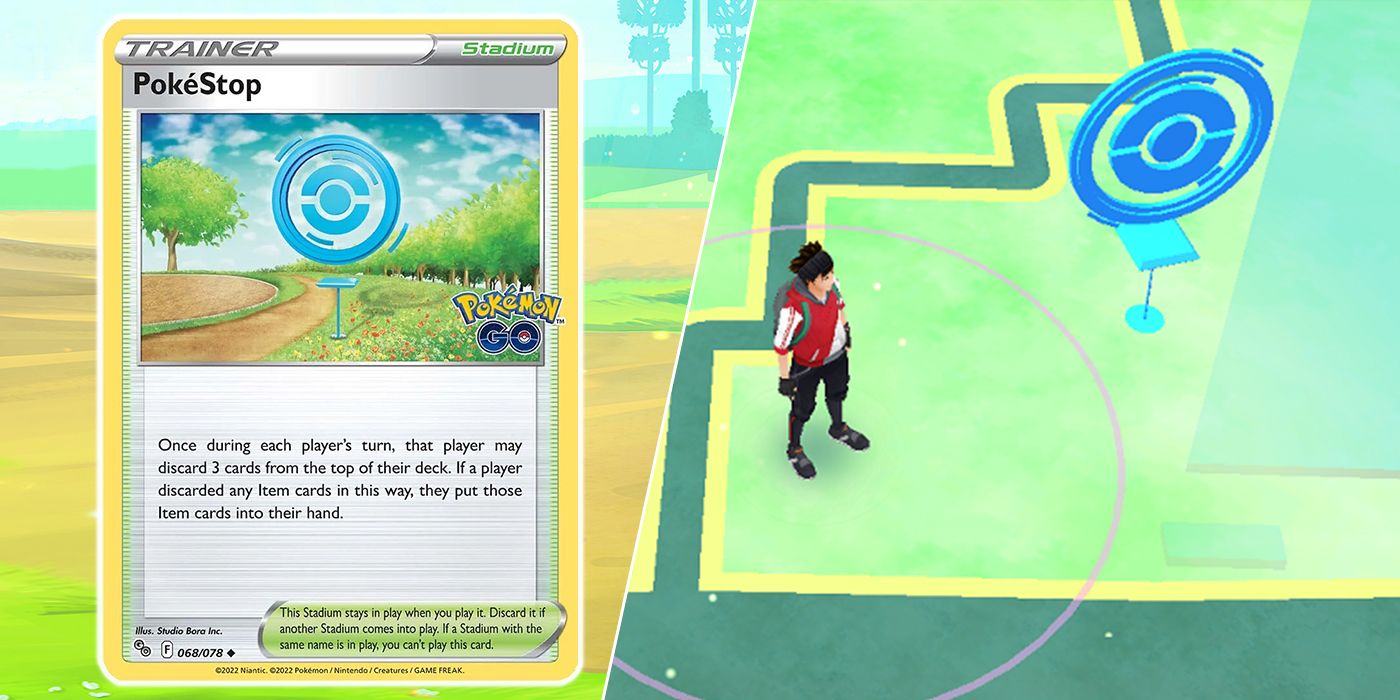
While mainline Gen games have Pokémon Centers and stores to purchase items, Pokémon GO instead has PokéStops. In the mobile game, PokéStops are real-life locations such as parks, schools, or local landmarks. Trainers who walk close to them, are able to spin the PokéStop symbol to generate free items such as Poké Balls and berries.
The Pokémon GO PokéStop mechanic makes its TCG debut as a Stadium card in the Pokémon Card crossover expansion. The Pokémon GO TCG set mirrors the Niantic map feature, by allowing players to instantly add item cards to their hand if they happen to be one of the three cards at the top of their deck.
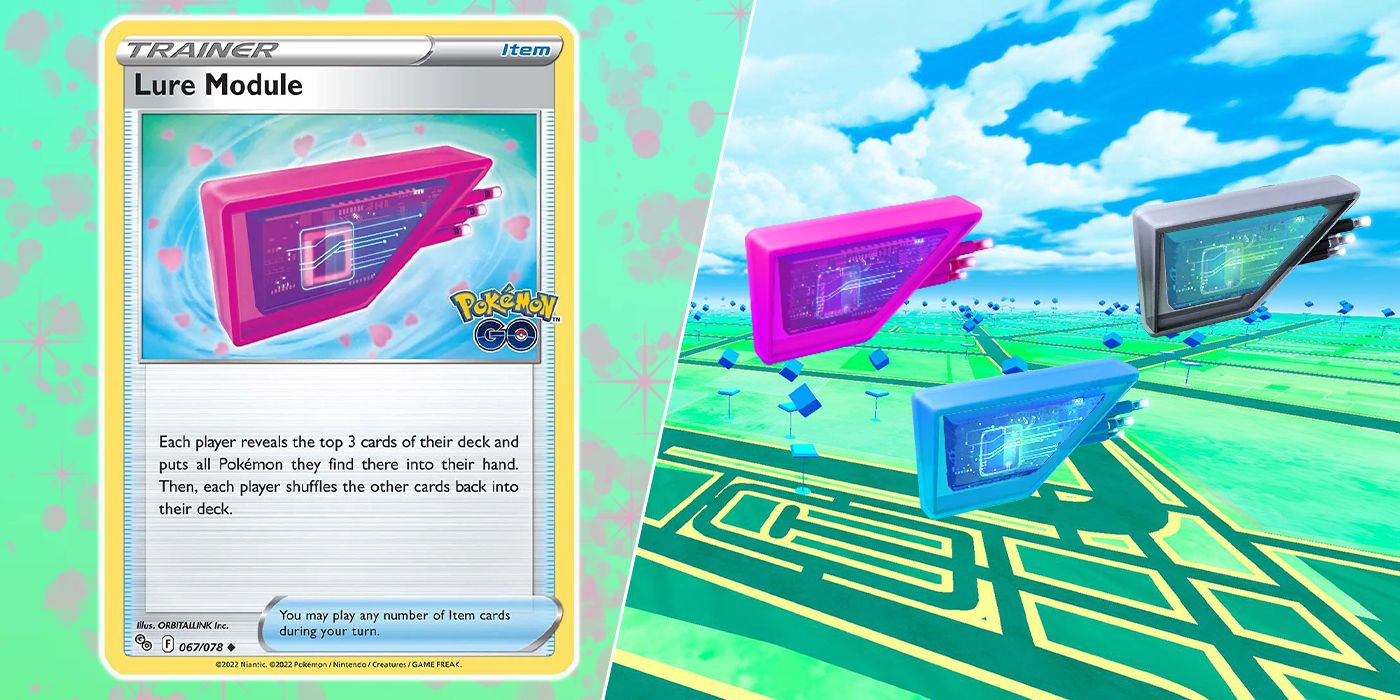
In the Pokémon GO TCG set, the Lure Module card forces each player to reveal the top three cards of their deck. If any of them are Pokémon, they are automatically added to the trainer's hand. The card also allows players to play any number of item cards that they have during their turn. The new Trainer Item card is based on a mechanic that Niantic created for Pokémon GO in 2016. Players who want to increase spawn rates in the wild can attach a lure module to a PokéStop to attract various Pokémon for a certain amount of time.
Pokémon GO Lure Modules can also trigger special evolutions in the game, such as the Mossy Lure which allows Eevee to evolve into Grass-type Leafeon. After a module is used, the map is infamously covered in Sakura petals that indicate when the lure is active. Because of this, local players often use PokéStops as a place to gather, as anyone can encounter a higher rate of Pokémon by stepping into the lure modules radius. Just like the PokéStop item card, it's neat to see the various ways Niantic mechanics have been faithfully implemented into the Pokémon Trading Card Game's take on the Pokémon GO game.
Comments
Post a Comment